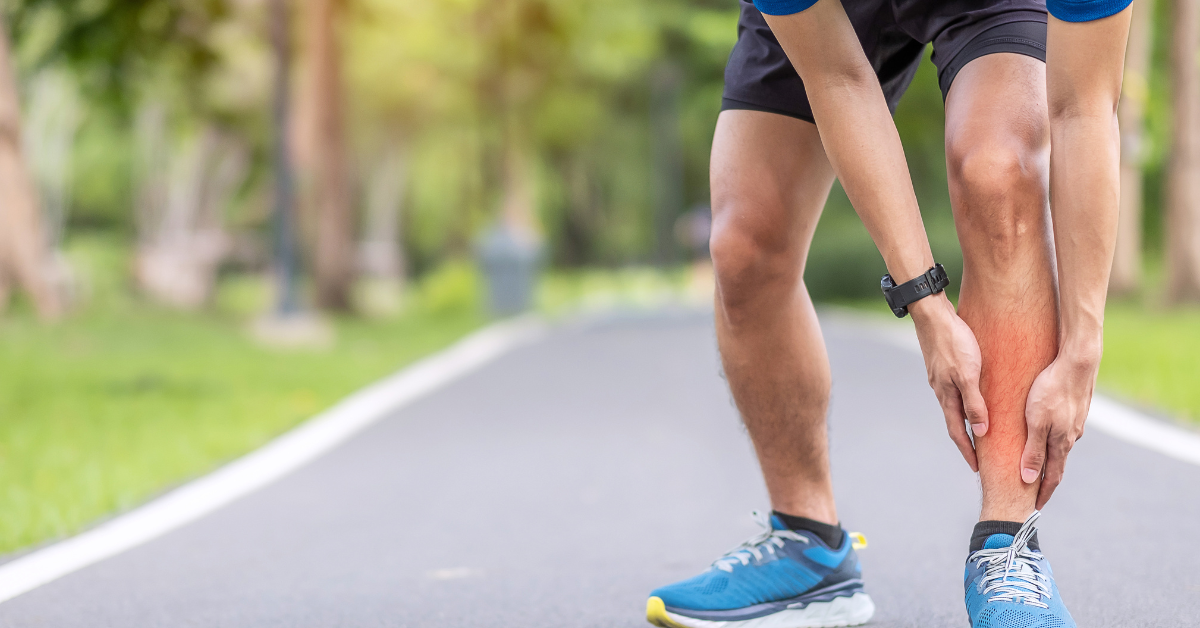As a Sports and Orthopaedic Surgeon at Apex Sports Clinic, Dr Foo Gen Lin has seen firsthand how shin splints can hinder performance and affect daily activities. Understanding the underlying causes of this condition is crucial for both prevention and effective management.
Shin splints, medically known as medial tibial stress syndrome, is a common ailment among athletes, especially runners and those involved in high-impact sports. Characterised by pain along the shin bone (tibia), this condition can hinder performance and disrupt training routines. Understanding the causes of shin splints and implementing preventive measures can help athletes maintain their fitness regimes without interruption.
Dr Foo shares with us the primary factors contributing to shin splints and share practical tips to help athletes and active individuals reduce their risk of developing this painful condition. Whether you're a seasoned athlete or just starting your fitness journey, these insights will help you maintain your momentum while keeping injuries at bay.
Causes of Shin Splints
Cause #1:
Repetitive stress on the shinbone and the connective tissues that attach muscles to the bone can lead to shin splints. Due to overuse of the muscles, this is common among runners, dancers, and military recruits. Rapidly increasing the intensity, duration, or frequency of physical activity can strain the muscles and bones in the lower leg.
Tip: Increase your workout intensity, duration, and frequency gradually. Avoid sudden changes in your exercise routine to give your muscles and bones time to adapt.
Cross-train to reduce repetitive stress on the shins, incorporate low-impact activities, such as swimming or cycling, into your fitness routine. Rest and recovery is also important. Allow adequate rest between intense workout sessions to enable muscle recovery. Overtraining can increase the risk of developing shin splints.
.png?width=500&height=262&name=Understanding%20Shin%20Splints_%20Causes%20and%20Tips%20for%20Prevention%20(2).png) Cross-train to reduce repetitive stress on the shins, incorporate low-impact activities, such as swimming or cycling.
Cross-train to reduce repetitive stress on the shins, incorporate low-impact activities, such as swimming or cycling.
Cause #2:
Wearing shoes that don't provide adequate support or are worn out can contribute to developing shin splints.
Tip: Invest in good-quality shoes that provide adequate arch support and cushioning. Replace worn-out shoes regularly to maintain proper support.
Cause #3:
Abnormal foot mechanics, such as flat feet (overpronation) or high arches (underpronation), can cause uneven stress distribution on the shinbone.
Tip: Consider consulting a running coach for a gait analysis. Based on your foot mechanics, an expert can recommend what's considered good running mechanics for you.
Strengthening the muscles of your lower legs, especially the calf muscles, can also help to improve overall stability and reduce the risk of shin splints. Exercises like calf raises, toe raises, and leg presses can be beneficial.
Cause #4:
Exercising on hard surfaces, like concrete, increases the impact on the lower legs, leading to shin splints.
Tip: Vary your running surfaces to reduce the constant impact on your shins. Soft surfaces like grass or a treadmill with cushioning can be easier on the legs compared to hard surfaces.
Stretching the calf muscles, Achilles tendon, and the muscles around the shinbone can enhance flexibility and prevent tightness, reducing the risk of shin splints.
.png?width=500&height=262&name=Understanding%20Shin%20Splints_%20Causes%20and%20Tips%20for%20Prevention%20(4).png) Soft surfaces like grass or a treadmill with cushioning can be easier on the legs compared to hard surfaces.
Soft surfaces like grass or a treadmill with cushioning can be easier on the legs compared to hard surfaces.
Shin splints can be painful and frustrating, but with the right approach, they can be prevented. By understanding the causes and implementing these preventive measures, athletes can reduce their risk of shin splints and continue to enjoy their activities pain-free. Remember, if you experience persistent shin pain, it’s important to consult a healthcare professional to rule out more serious conditions and receive appropriate treatment.
Featured Contributor:
![[Hubspot] Thumbnail_core clinic_apex](https://www.corecollective.sg/hs-fs/hubfs/%5BHubspot%5D%20Thumbnail_core%20clinic_apex.png?width=250&height=292&name=%5BHubspot%5D%20Thumbnail_core%20clinic_apex.png)
Apex Sports Clinic
Dr. Foo Gen Lin
Sports & Orthopaedic Surgeon
As passionate athletes, we intimately understand the anguish and frustration that injuries can inflict, and our primary commitment is to facilitate your swift return to the sports you love.
With a collective experience exceeding 15 years, the Apex team has been dedicated advocates for athletes, assisting them in preventing, overcoming, and conquering injuries. We've invested countless hours in rigorous training and education to ensure we are exceptionally equipped to provide you with the highest care and support.
Our practice specialises in both non-surgical and surgical treatments for sports injuries, including knee ligament injuries, shoulder dislocations, and hip labral tears. We also handle emergencies like acute fractures and injuries, along with chronic joint conditions like osteoarthritis. With our experienced medical team and evidence-based approach, we provide personalised care to help patients recover and improve musculoskeletal health.
Connect with Apex Sports Clinic on their website.
Core Collective is home to over 100 fitness, wellness, beauty and lifestyle and medical professionals who can help you live your best life. Book a tour to get started today!
.png)


.png?width=500&height=262&name=Understanding%20Shin%20Splints_%20Causes%20and%20Tips%20for%20Prevention%20(2).png)
.png?width=500&height=262&name=Understanding%20Shin%20Splints_%20Causes%20and%20Tips%20for%20Prevention%20(4).png)
![[Hubspot] Thumbnail_core clinic_apex](https://www.corecollective.sg/hs-fs/hubfs/%5BHubspot%5D%20Thumbnail_core%20clinic_apex.png?width=250&height=292&name=%5BHubspot%5D%20Thumbnail_core%20clinic_apex.png)